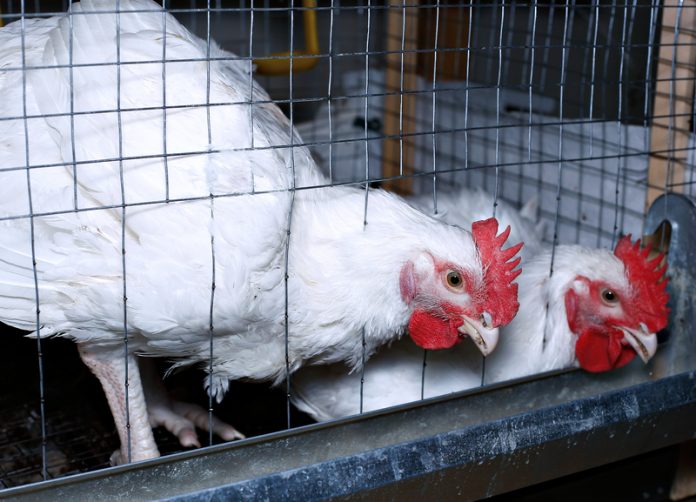The Agricultural Research Service (ARS) is the U.S. Department of Agriculture’s scientific in-house research agency, as Open Access Government discovers
The Agricultural Research Service (ARS) is the U.S. Department of Agriculture’s scientific in-house research agency. Their job is finding solutions to agricultural problems that affect Americans daily, from the field to table.
To give a flavour of ARS’s work, they are responsible for 690 research projects within 17 national programmes, 2,000 scientists and 6,000 other employees. They boast 90+ research locations, including overseas laboratories and have an annual fiscal budget of $1.1 billion.
In addition, they encourage diversity in their workforce, an attitude that encourages the ARS to be the best in terms of the excellent research work they carry out.
The vision of ARS is simply to, “lead America towards a better future through agricultural research and information” (1) according to their website. The organisation’s mission statement is to conduct research to develop and transfer solutions to agricultural problems that are a high national priority. In addition, ARS sets out to supply information access and dissemination to:
- Ensure high-quality, safe food, and other agricultural products;
- Assess the nutritional needs of Americans;
- Sustain a competitive agricultural economy;
- Enhance the natural resource base and the environment;
- Provide economic opportunities for rural citizens, communities, and society as a whole and;
- Provide the infrastructure necessary to create and maintain a diversified workplace. (1)
One recent development is that the ARS recently launched a newly designed website which improves access to information about their research. The new site features mobile responsiveness, so that users can navigate and view information on both mobile and desktop devices with more ease. In addition, the ARS website has more than 300,000 dynamic pages, which is certainly a fantastic achievement.
Chief Information Officer, Paul Gibson said: “This new design better showcases the research generated by our scientists and allows us to better share ARS research findings that have impacted our nation and our world.”
When visiting the new site, you can find out about ARS’s role in mass-producing penicillin or developing new crops such as carrots, seedless grapes, watermelon and tomatoes. Other exciting subjects covered on the new site include preventing foodborne pathogens, developing low-fat cheese and countless other discoveries made by ARS.
Breeding pathogen-resistant chickens
In other recent news from ARS, we find out about a new test developed by ARS scientists in College Station, Texas, which could make breeding pathogen-resistant chickens easier. The test identifies roosters whose blood contains naturally high levels of two key chemicals – chemokines and cytokines. These 2 chemicals mobilise the birds’ innate immune response, in the view of ARS microbiologist Christi Swaggerty.
Using the new test, commercial poultry breeders can single out roosters with a strong immune response and use them to selectively breed a more robust flock. Such resistance, particularly during the birds’ first week of life, could reduce costs around food safety and animal well-being.
Measures to protect chickens from pathogens involves the use of antibiotics and other medications, sanitation, vaccination and biosecurity. Having said that, some chickens have a particularly efficient and robust immune response and as such, they can resist pathogens, underlines Swaggerty.
In addition, the researchers also used the test to select roosters for breeding a line of resistant broilers. The researchers then exposed the resistant broilers to several pathogens, then they compared the resistant group to a group of susceptible broilers bred from roosters, with low cytokine and chemokine levels present.
Susceptible broilers had more signs of infection and pathogens than the resistant group, according to the published results. Ultimately, this resistance could mean that fewer pathogens remaining on birds at the processing plant, and an improvement in consumer safety, Swaggerty added.
It is also worth noting that Swaggerty and her colleagues study the genetics of chickens’ resistance to foodborne disease-causing pathogens, such as Campylobacter and Salmonella. The ARS press release goes on to explain more around this compelling point.
“Some species of these two bacteria together cause 2 to 3 million U.S. cases of foodborne illness in consumers and 450-500 deaths annually.
Another poultry disease, coccidiosis, is caused by a single-celled parasite known as Eimeria. In the U.S., coccidiosis inflicts annual production losses of up to $800 million, making this intestinal disease a significant threat to nearly 9 billion U.S. meat-type birds.” (2)
In closing, the last word goes to the Director of the ARS’s Office of Outreach, Diversity, and Equal Opportunity, Donald L. McLellan. Indeed, ARS strongly supports a diverse workforce, which will ultimately reflect the aim of the Agricultural Research Service (ARS) to reach their full potential. He says: “Let us all commit ourselves to a new conversation- one that celebrates our unique differences while acknowledging our common purpose- to becoming the best agency that we can be.” (3)
(1) https://www.ars.usda.gov/about-ars/
(3) https://www.ars.usda.gov/office-of-outreach-diversity-and-equalopportunity/
Open Access Government
Tel: +44 (0)1270 502 874











